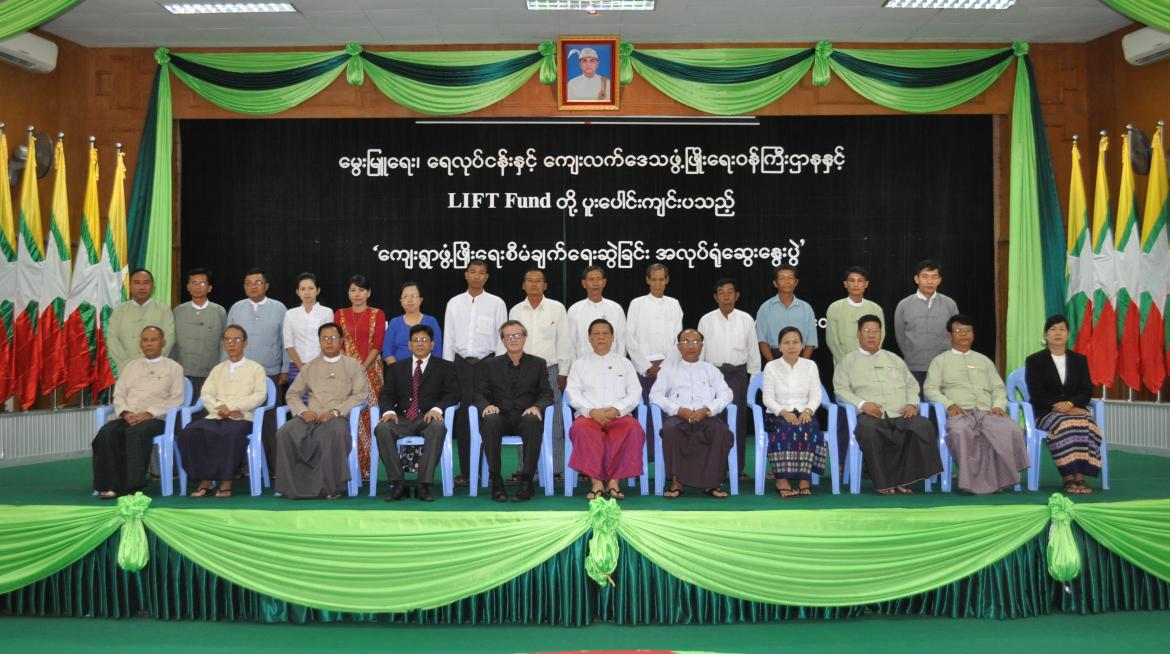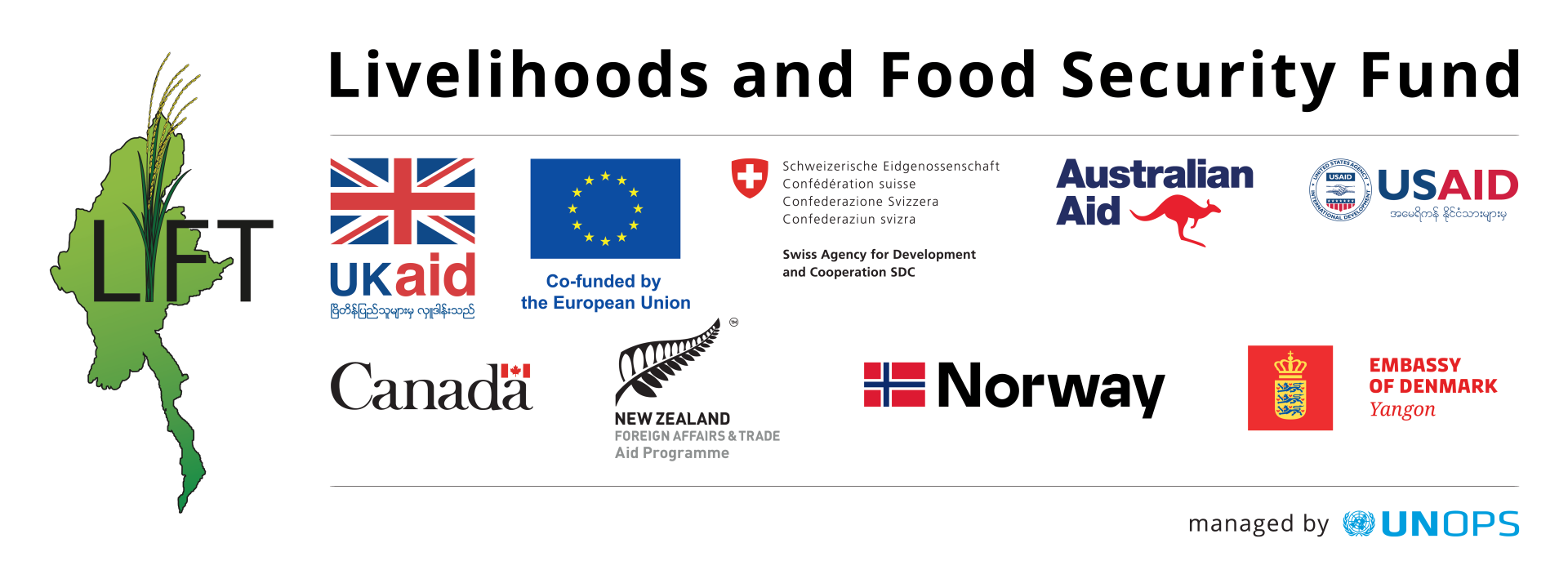
With technical assistance from LIFT, the Department of Rural Development (DRD) at the Ministry of Livestock, Fisheries and Rural Development is developing a national approach/model for participatory village planning, which will be piloted in 170 villages across all states and regions in Myanmar this year.
LIFT supports two full-time technical advisers in the Ministry. Their guidance to MoLFRD staff to implement the new National Strategic Framework for Rural Development has resulted in a capacity development plan for the ministry, and the development of a national approach to village-level and township level development planning.
On 9th June, DRD held a workshop on Village Development Planning at Nay Pi Taw, with four objectives:
- To discuss the utility of village development planning and how it can contribute to “bottom-up” policy development, planning, programming and budgeting
- To share experiences and lessons learned from field-testing of a national approach for village development planning in two villages in Pyinmana township
- To frame a strategy and work plan for completing the initial pilot phase of the national “village development planning” exercise which covers 170 villages in 34 townships
- To set up a strategy and make institutional arrangements for scaling up the village development planning process to cover all villages in the country’s 305 rural townships
His Excellency U Khin Maung Aye opened the event. His speech is available here.
LIFT Fund Board Director, Andrew Kirkwood addressed workshop participants, outlining four potential benefits/challenges of the village planning process:
- The process could be instrumental in contributing to the government’s intention to develop “bottom-up” policy development, planning and budgeting.
- The “bottom up” planning process will require consolidating individual village development plans at the township level and, in the process, will integrate the village plans into township development plans.
- The task of conducting village development plans for nearly 64,000 villages in the country’s 305 rural townships will place enormous demands on the government to ensure that quality technical support is made available to villages. The government could use innovative ways to accomplish this including the possibility of covering representative sample of villages in each township instead of having to cover every single village separately
- The government will need to develop capacity at both union level and township level and, perhaps later, at the region and state level to ensure that adequate technical and management capacity is organised.
His full speech is available here.
DRD’s eventual aim is to roll out the village planning model across all villages in the country's 305 rural townships.
More information about the workshop sessions can be found below:
- ‘The Strategy, Approach and Methodology on Village Development Planning’- by Dr Zarn Ni Minn, Deputy Director, Department of Rural Development
- ‘Process of PRA Tools’- by U Khin Win, Senior Development Planner, LIFT
- ‘Sharing Experiences and Disseminating Information on Village Development Planning’ – by U Kyaw Naing, Consultant, LIFT
- ‘Village Development Planning of Lei Lu Ai Village and Nyaung Pin Thar Village in Pyinmana Township’ – by Mr Shafique Rahman, Senior Strategic Advisor, LIFT
- ‘Presentation of Opinions on Village Development Planning’- by the Village Development support committees of the two villages


